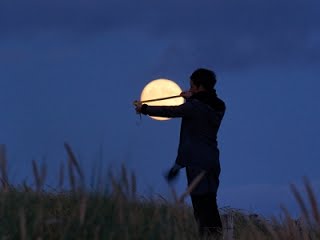
| Observational Astronomy (AS.171.618)
Nadia Zakamska Spring 2020 |
| This is an old course webpage for information only, not a currently active course. Some materials have been removed in preparation for the next class. |
| Announcements |
Update March 13: This class is moving to online mode, with the first Zoom lecture on Monday March 23. Friday March 13 lecture is cancelled as per the University rules. All class communication will be through Slack. If you are interested in informal audits, please send me an email and you will be added to the Slack workspace with all access information.
Update April 2020: Since we have switched to remote instruction this semester, unfortunately our roof-top projects cannot proceed. Furthermore, appreciating the difficulty of adjusting to the new communication and presentation style the presentation requirements listed in Homework 1 are being scaled down (one presentation at astroph per semester is required, instead of two). Instead of the roof-top projects, the final homework number 5 ("Astrophysical mysteries") will double as the final data analysis project. The final grade for the course will be assigned based on the sum of all points for all assignments. All JHU courses are graded S/U this semester.
| Course information |

1. Overview
How do we observe the Universe at each wavelength (or even with different "messengers") and what do we see? This course will present the (astro)physical foundations required for astronomical observations across the entire spectrum and with non-electromagnetic messengers. For each wavelength range (gamma rays, X-rays, UV, visible, IR, radio), as well as for gravitational waves and neutrinos, we will discuss the type of detectors used, the range of possible observations, and current open questions. We will also discuss the dominant astronomical and terrestrial sources across the spectrum and study the differences between ground- and space-based observations.
Informal drop-ins and audits are welcome; no registration or advance notice necessary (registered audits are required to attend at least 70%). If you are interested in a specific topic, please contact the instructor for the most up-to-date schedule. Physics seniors wanting to register will be automatically approved. All other undergraduates -- please send your transcript and notes about your computing experience for approval.
2. Lecture schedule
Instructor: Prof. Nadia Zakamska
Lectures: Mon and Fri, 11:00 am - 12:15 pm (some exceptions possible), Bloomberg 259; office hours: by appointment.
3. Homework and grading
(1) There will be roughly one homework every two weeks. You may discuss homework with your classmates or others. You may not look at their written solutions (and thus, you may not show yours to others). You may use any resources for solving the problem; if you do, please provide references to these resources. If you use a direct quote, you must put it in quotation marks and provide a reference. Your own words are always preferable. Unless specified otherwise, there is no need to type your solutions, if you write clearly enough that I can read your handwriting.
(2) On the due date, homework must be submitted by the end of the lecture to N. Zakamska. Everybody gets one free pass (per the entire semester) on one <=24 hour delay on an assignment. Aside from this, submissions late by 0-24 hours suffer a 50% penalty. Submissions late by 24 hours or more will suffer 100% penalty.
(3) In addition to (or instead of) homework, there will be three projects: we will use the optical telescope on the roof, we will use the radio telescope on the roof, and we will write observing proposals. The timing of these projects will be discussed in the first weeks of classes. One of the projects will be due instead of the final exam. As per the University final exam schedule, I plan to wrap up the class by the end-of-day on May 6.
Tentatively, the final grade is composed of 50% homework, 50% projects.
The strength of the university depends on academic and personal integrity. In this course, you must be honest and truthful. Ethical violations include cheating on exams, plagiarism, reuse of assignments, improper use of the Internet and electronic devices, unauthorized collaboration, alteration of graded assignments, forgery and falsification, lying, facilitating academic dishonesty, and unfair competition. The guidelines for this course are listed above. Report any violations you witness to the instructor. You may consult the associate dean of student conduct (or designee) by calling the Office of the Dean of Students at 410-516-8208 or via email at [email protected]. For more information, see the Homewood Student Affairs site on academic ethics.
| Assignments and reading materials |

Homework 1, due by the end of the lecture on Monday Feb 10 in class.
Homework 2, due by the end of the lecture on Monday Feb 24 in class.
Homework 3, due by the end of the lecture on Monday March 23 by email to NLZ.
Homework 4, due by the end of the lecture on Monday April 13 by email to NLZ.
Homework Extra Credit 1, will be counted if submitted by the end of day on May 1.
Homework Extra Credit 2, will be counted if submitted by the end of day on May 1.
Homework 5 / Final exam, due by the end of day on May 8. Here are the files: FILES
April 22 addition: I am not looking for astronomical identification of these objects (i.e., "This is NGC 9999"). Indeed, I think I mixed up fake and real information in a few cases so that you should not be able to identify at least some of these objects. What I am looking for is the description of the physical nature of the sources, with as much physical information as possible based on the data provided. E.g., instead of "This is NGC 9999", I am looking for "This is an elliptical galaxy at redshift 0.5. I know this because the image is spatially resolved and because the SED is well-fit by an elliptical galaxy template shifted to redshift 0.5. It also looks like from the SED that there is a radio-only AGN present in this galaxy. The emission mechanisms are blah-blah-blah (as a function of wavelength)." So instead of "1 point for astronomical identification", I would like the header to read "1 point for astrophysical identification", if that makes sense.
Summary on detectors, should be useful for HW3.
Maryland Space Grant Observatory: telescope introduction
Maryland Space Grant Observatory: camera user guide
| Syllabus |
| This is a very tentative syllabus. If you are attending on a drop-in basis for a specific topic, check in often and/or contact the instructor for the up-to-date schedule. |
| Miscellaneous |
Latex template, style file and instructions
Garland -- Advice for beginning physics speakers